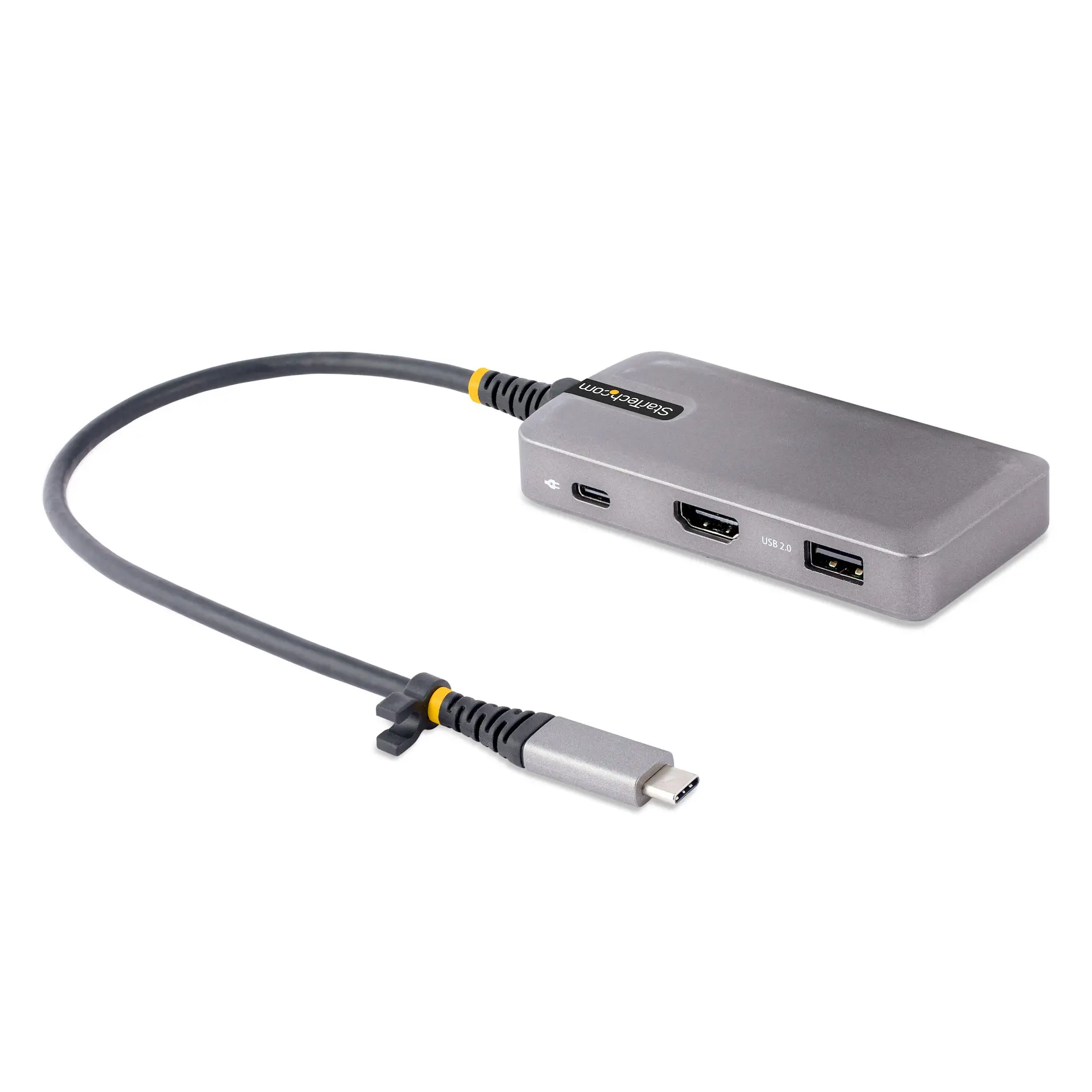How does a USB-C to USB 2.0 to HDMI adapter work?


USB-C to USB 2.0 to HDMI adapters have become increasingly popular in recent years due to their ability to connect devices with different ports and enable seamless data transfer and video output. These adapters are versatile and convenient, allowing users to connect their USB-C devices to HDMI displays or projectors. But how exactly do these adapters work? In this article, we will delve into the inner workings of USB-C to USB 2.0 to HDMI adapters and explore their functionality in detail.
Understanding USB-C and HDMI
Before we dive into the specifics of USB-C to USB 2.0 to HDMI adapters, let’s first understand the two main components involved: USB-C and HDMI.
USB-C, also known as USB Type-C, is a versatile and reversible connector that has gained widespread adoption in recent years. It offers faster data transfer speeds, higher power delivery, and the ability to transmit audio and video signals. USB-C ports can be found on a wide range of devices, including laptops, smartphones, tablets, and even some gaming consoles.
HDMI, on the other hand, stands for High-Definition Multimedia Interface. It is a standard audio/video interface that allows for the transmission of high-quality digital audio and video signals. HDMI ports are commonly found on TVs, monitors, projectors, and other display devices.
How USB-C to USB 2.0 to HDMI Adapters Work
USB-C to USB 2.0 to HDMI adapters act as intermediaries between USB-C devices and HDMI displays. They convert the USB-C signal into a format that can be understood by HDMI-enabled devices, allowing users to connect their USB-C devices to HDMI displays seamlessly.
Here’s a step-by-step breakdown of how these adapters work:
1. USB-C to USB Adapter: The USB-C to USB 2.0 to HDMI adapter typically has a USB-C female port on one end and a USB-A male port on the other end. This USB-A port allows you to connect your USB-C device to the adapter.
2. USB 2.0 to HDMI Conversion: The USB-A port on the adapter is designed to support USB 2.0 technology. When you connect your USB-C device to the adapter, it converts the USB-C signal into a USB 2.0 signal.
3. HDMI Output: Once the USB-C signal is converted into a USB 2.0 signal, the adapter then converts it into an HDMI signal. This HDMI signal can be transmitted to an HDMI-enabled display device, such as a TV or monitor, using an HDMI cable.
4. Display Configuration: Depending on the capabilities of your USB-C device and the adapter, you may be able to configure the display settings, such as resolution and refresh rate, to optimize the output on the HDMI display.
Benefits and Limitations of USB-C to USB 2.0 to HDMI Adapters
USB-C to USB 2.0 to HDMI adapters offer several benefits, making them a popular choice for users looking to connect their USB-C devices to HDMI displays. Some of these benefits include:
– Versatility: These adapters allow users to connect their USB-C devices to HDMI displays, expanding the range of devices they can connect and use together.
– Convenience: USB-C to USB 2.0 to HDMI adapters are compact and portable, making them easy to carry and use on the go. They eliminate the need for multiple cables and adapters, simplifying the setup process.
– Cost-Effective: These adapters are generally more affordable compared to other solutions, such as USB-C to HDMI cables or USB-C hubs with built-in HDMI ports.
However, it’s important to note that USB-C to USB 2.0 to HDMI adapters have some limitations:
– Limited USB 2.0 Bandwidth: USB 2.0 technology has a lower bandwidth compared to USB 3.0 or USB 3.1. This means that the adapter may not support high-resolution video output or fast data transfer speeds.
– Compatibility: Not all USB-C devices are compatible with USB-C to USB 2.0 to HDMI adapters. It’s essential to check the compatibility of your device before purchasing an adapter.
– Power Delivery: USB-C to USB 2.0 to HDMI adapters may not support power delivery, meaning that you may need to connect your USB-C device to a separate power source while using the adapter.
Conclusion
USB-C to USB 2.0 to HDMI adapters provide a convenient solution for connecting USB-C devices to HDMI displays. By converting the USB-C signal into a USB 2.0 signal and then into an HDMI signal, these adapters enable seamless video output and data transfer. While they offer versatility and convenience, it’s important to consider their limitations, such as limited bandwidth and compatibility issues. Overall, USB-C to USB 2.0 to HDMI adapters are a valuable tool for users looking to connect their USB-C devices to HDMI displays without the need for multiple cables and adapters.
Recent Posts
How do I create an engaging and informative online quiz or assessment?
Creating an engaging and informative online quiz or assessment can be a powerful tool for… Read More
What are the most effective methods for managing and reducing work-related stress in the hospitality industry?
Work-related stress is a common issue in the hospitality industry, where employees often face long… Read More
How can I improve my assertiveness and communication skills in a leadership position?
In a leadership position, assertiveness and effective communication skills are crucial for success. Being able… Read More
What are the key elements of a successful employee recognition and rewards program?
Employee recognition and rewards programs play a crucial role in motivating and engaging employees, as… Read More
How do I effectively manage and respond to customer feedback and reviews?
Customer feedback and online reviews play a crucial role in shaping a company's reputation and… Read More
What are the best strategies for effective time management as a stay-at-home parent?
Effective time management is crucial for stay-at-home parents who juggle multiple responsibilities on a daily… Read More